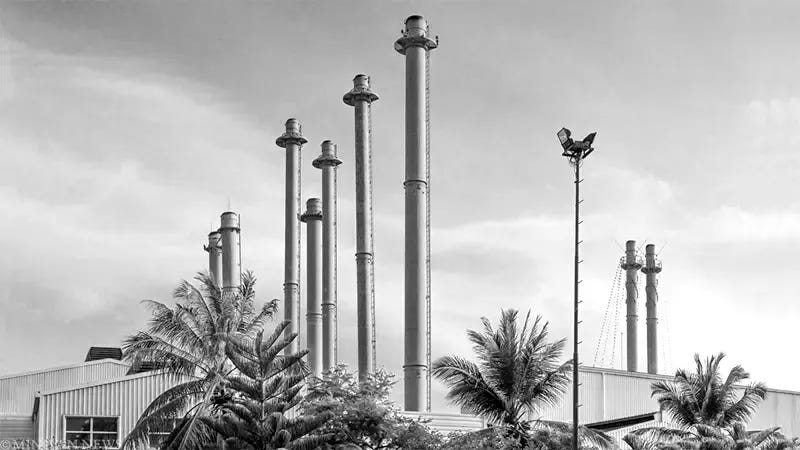The Blackouts Are Not an Accident. They're a Warning
How a cash-strapped national utility, a bloated political payroll, and a series of bad decisions led to the blackout we experienced today
Malé felt that familiar sinking feeling again today when the city went dark again. This is the second major blackout in less than three months, and it can't be written off as just a technical problem anymore. There is something very wrong.
The energy sector is often the first sign that an economy is going down. As the crisis got worse, we saw it happen in Sri Lanka, where power cuts became a daily problem. We see it in places like Syria and Cuba, where it is a constant struggle to keep the lights on.
This pattern is all too familiar, and it's happening right now, right here. I wanted to know what the official story was, but I also wanted to know what was really going on. So, I spent the afternoon on the phone with a few high-ranking STELCO and government officials to find out what really happened.
What Really Happened in June
The blackout on June 1st wasn't just a random problem. My sources confirmed a chain of events that shows how awful things are at our national electricity company.
It all started with a money issue: STELCO had reached its credit limit and couldn't buy diesel from STO as before. The unpaid fuel bills are piling up. This made them switch the oil pipeline, for the Hulhumalé central powerhouse to an oil tank that hadn't been utilised in months. This is a reserve tank that isn't kept up very well.
The tank had been idle for quite sometime that a thick, mud-like substance had built up at the bottom. When they changed the fuel line, this sludge got sucked into the system, blocking the lines and running the engines out of oil. They all shut down one by one. The city-wide blackout was the result.
To be clear, the technical failure was a direct result of a financial and management failure. The national power company is running out of cash.
A Company Running on Fumes
Things are bad inside STELCO. An official I talked to said they are having trouble paying for even the most basic things, like salaries.
One source said, "Sometimes the STELCO bank balance is lower than an individual's," which is a shocking admission.
When a business is this short on cash, it can't afford to do regular, thorough maintenance on its engines. The engines get worse. It's impossible to buy fuel in large amounts, so they have to rely on old reserve tanks, which is what caused the June disaster.
So, how did we end up here? My talks brought up a number of long-standing problems:
Unsustainable Politics: Political decisions over the years have made payroll and administrative costs go through the roof, making them impossible to keep up with.
A Technical Brain Drain: The constant political appointments are making the skilled technical staff less motivated. I was told that good technicians have quit the company, which means there are now fewer technical experts in important decision-making positions, which is causing bad management.
Bad Investments: The company's finances have been drained by bad investments, such as the millions spent on starting an e-vehicle service in Malé, which is very different from what the company was supposed to do.
This May be Just the Beginning
The blackout today, the second one in such a short time, is not an isolated event. It is what happens when a company is in a lot of financial trouble because of bad management. It is a sign of a much bigger problem.
I'm afraid this is only the beginning. Things will probably get worse before they get better.
We need to be serious about this and ask the hard questions right now. Are we ready for a future where we can't count on getting enough electricity all the time? It is possible that blackouts could become a daily occurrence.



